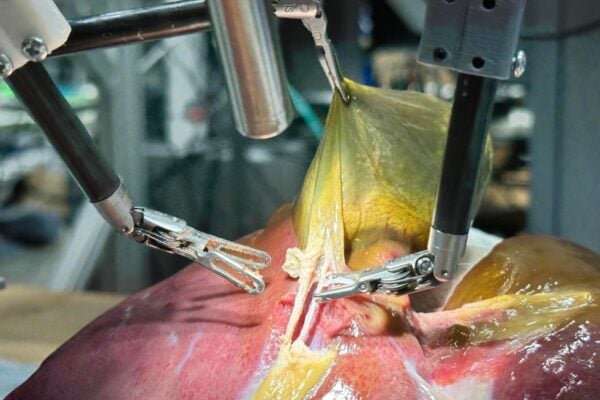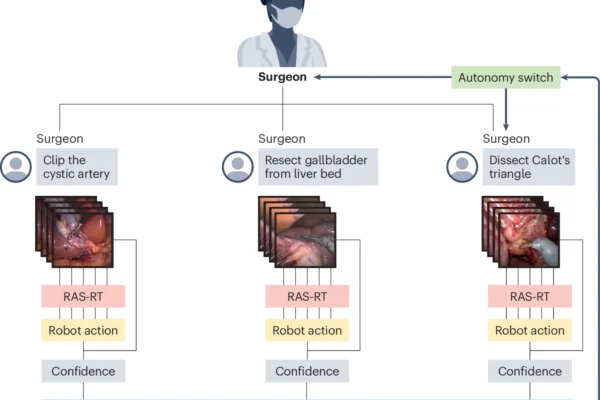In: Robotics, Augmented Reality, and Devices

Augmented reality meets neuroendoscopy
- December 12, 2025
- Machine Learning and Artificial IntelligenceRobotics, Augmented Reality, and Devices
Hopkins researchers bring advanced 3D visualization techniques to neurosurgery.

Symposium spotlights AI’s potential to revolutionize health care
- September 29, 2025
- Center NewsMachine Learning and Artificial IntelligenceMobile HealthRobotics, Augmented Reality, and Devices
Robot-assisted surgery, an app for diagnosing strep throat, and a new tool to detect glaucoma are all on the health care horizon thanks to artificial intelligence innovators at the Johns Hopkins University.

Speak and your X-ray will be imaged
- July 29, 2025
- Machine Learning and Artificial IntelligenceMedical ImagingRobotics, Augmented Reality, and Devices
Johns Hopkins researchers present the voice-controlled X-ray imaging system that earned a Best Paper Award at IPCAI 2025.

Robot performs first realistic surgery without human help
A system trained on videos of surgeries performs like an expert surgeon.

Steering autism research with sensory science
- June 26, 2025
- Robotics, Augmented Reality, and Devices
Johns Hopkins University and Kennedy Krieger researchers use a new racing game to shed light on how children with autism learn.

Beyond assistants: How AI could enable surgical robots to think and act autonomously
- December 12, 2024
- Robotics, Augmented Reality, and Devices
Multimodal training promises smarter, safer robotic surgery.